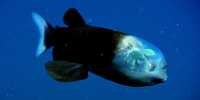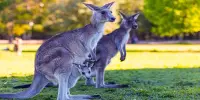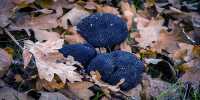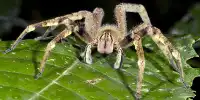The San Diego Natural History Museum’s Paleontology Collection has discovered an unusual Eocene meat-eater that was ripping up flesh roughly 42 million years ago, giving ancient predators a new participant. The saber-toothed beast is a remarkable discovery, representing one of Earth’s oldest all-meat eaters and filling in gaps in our knowledge of the evolution of carnivory in mammals. “Today, eating an all-meat diet, sometimes known as hypercarnivory, isn’t unusual… “However, 42 million years ago, animals were only just figuring out how to subsist on meat alone,” said Dr Ashley Poust, a postdoctoral researcher at the Nat.
“One significant step forward was the evolution of specialized teeth for slicing flesh, which we find in this newly described animal.” The new-to-science predator has been given the name Diegoaelurus vanvalkenburghae in honor of the San Diego County where it was discovered (not the Ice Age figure) and scientist Blaire Van Valkenburgh, whose study into carnivore evolution was essential in the current publication. Its 42-million-year-old skeleton has a lower jaw and well-preserved teeth, indicating a meat-heavy diet.
D. vanvalkenburghae, as an early predator, joins the Machaeroidines, a mystery extinct group of species about whom little is known, making this new member an interesting addition. In a statement, co-author Dr Shawn Zack of the University Of Arizona College Of Medicine stated, “We know so little about Machaeroidines, so any new finding dramatically enhances our image of them.”
“The teeth on this very full, well-preserved Diegoaelurus fossil allow us to deduce the diet and begin to comprehend how Machaeroidines are linked to one another.” D. vanvalkenburghae was approximately the size of a bobcat, but had teeth unlike any other predator present at the time, according to the bones.
Poust noted, “Nothing like this has ever existed in animals before.” “A few mammalian predecessors possessed long fangs, but Diegoaelurus and its few cousins represent the first cat-like approach to an all-meat diet, with sabre-tooth in front and slicing scissor teeth called carnassials in the rear,” says the author. “It’s a strong mix that has developed separately in various animal species over millions of years.”
Its lethal dentition is one of evolution’s early attempts to sustain a hypercarnivorous diet, as well as an example of convergent evolution, as similar saber-toothed species appeared later among other cat-like creatures. Poust wonders, “Did these groups ever interact, or perhaps fight for space and prey?” “We don’t know for sure, but San Diego is proving to be an incredibly crucial location for carnivore evolution.” The San Diego Natural History Museum’s website has a 3D version of D. vanvalkenburghae’s amazing gnashers.















